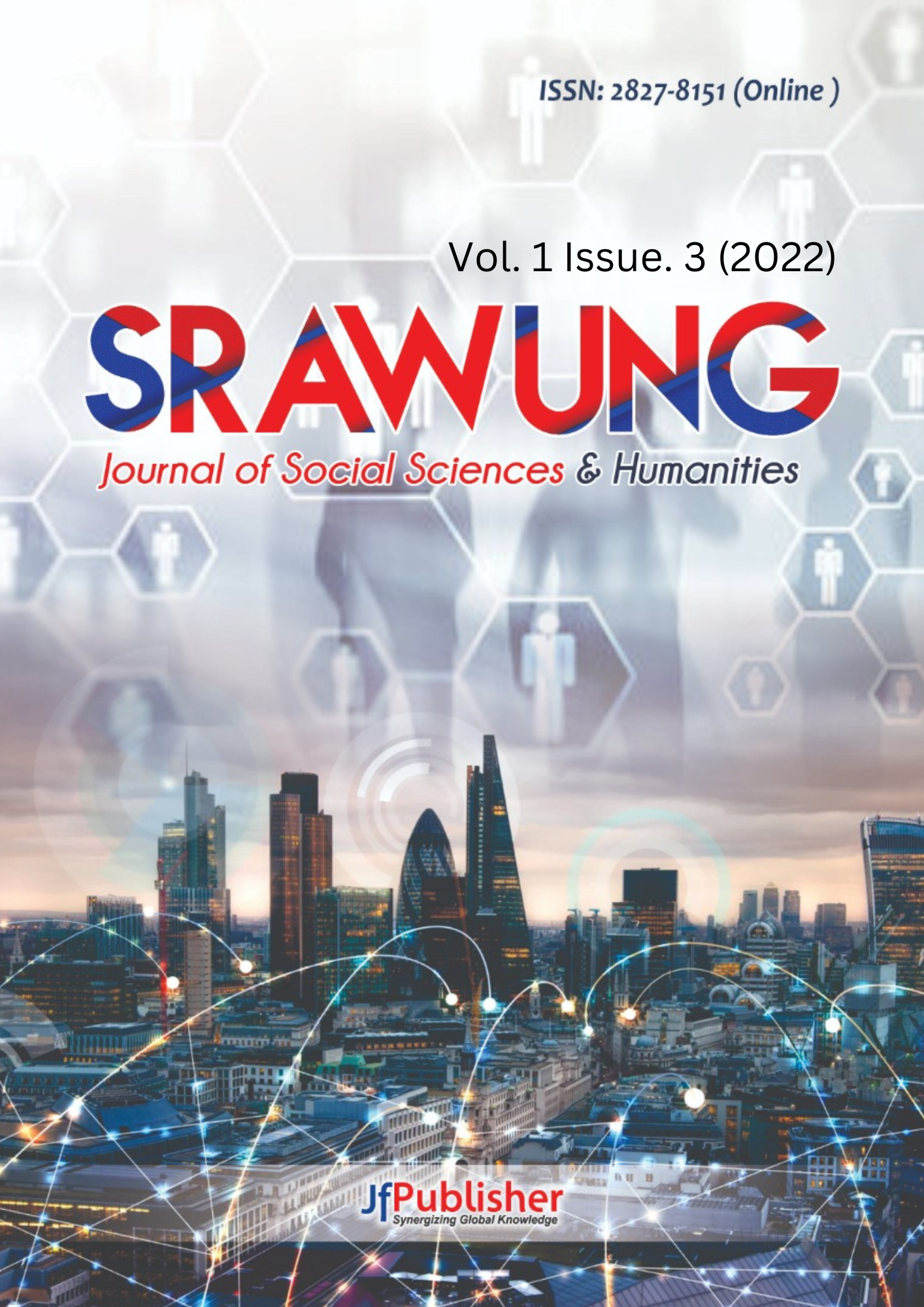THE IMPLEMENTATION OF INTEGRATED CURRICULUM FOR EARLY EDUCATION (PAUD) IN MOJOKERTO DURING COVID-19
Universitas Negeri Surabaya
Universitas Negeri Surabaya
Universitas Negeri Surabaya
DOI:
https://doi.org/10.56943/jssh.v1i3.92This research aims to describe the implementation of an integrated curriculum for early childhood education (PAUD) in Mojokerto during COVID-19 pandemic. This research design uses descriptive qualitative to describe the implementation of the integrated curriculum at Mojokerto Kindergarten Early Childhood School with research subjects at Al-Amin Kindergarten and Dharma Wanita Kindergarten Mojokerto East Java. This research uses the method or observation technique, in-depth interviews and documentation. This research uses an interactive model Miles & Huberman which is carried out through 3 stages; consist of (1) data reduction, (2) data display or data presentation, (3) conclusion drawing or data verification. Based on the research results, an integrated curriculum in early childhood is required to achieve learning objectives as an effort to develop children's characteristics and their way of thinking that observe everything holistically. By this integrated curriculum, students are expected to have the ability to identify, collect, assess and use information around them in meaningful way. The Implementation of an integrated curriculum during COVID-19 pandemic carried out via online and offline.
Keywords: Early Childhood Education Integrated Learning Interactive Model
Aisyah, S., Tatminingsih, S., Amimi, M., Chandrawati, T., Budi, U. L., & Setiawan, D. (2008). Pembelajaran terpadu. Universitas Terbuka.
Berns, R. G., & Erickson, P. M. (2001). Contextual teaching and learning: The highlight zone: Research at work No. 5. The National Centers for Career and Technical Education.
Campbell, L., Campbell, B., & Dickinson, D. (2004). Metode praktis pembelajaran: Berbasis multiple intelligences. ISI Press.
Clements, D. H., & Sarama, J. (2003). Young children and technology: What does the research say? YC Young Children, 58(6).
Erwin Akib, et al. (2020). Study on implementation of integrated curriculum in Indonesia. International Journal of Recent Educational Education, 1(1), 39–57.
Fogarty, R. (1993). The mindful school: How to integrate the curricula. IRI Skylight Training and Publishing, Inc.
Jamaris, M. (2009). Pengembangan holistik anak usia dini berbasis kurikulum dan pembelajaran terpadu.
Kevin, C. C. (2015). Research supporting integrated curriculum: Evidence for using this method of instruction in public school classrooms. In ERIC. Associate Professor of Early Childhood Education, Arkansas Tech University.
Malik, H. (2011). Pendidikan non formal dan peranannya dalam pendidikan anak usia dini. Kompasiana.
Mawson, W. B. (2013). Emergent technological literacy: What do children bring to school? International Journal of Technology and Design Education, 23(2), 443–453. https://doi.org/10.1007/s10798-011-9188-y
Miles, M. B., & Huberman, A. M. (2014). Qualitative data analysis: An expanded sourcebook (3rd ed.). Sage Publications.
Nadar, W. (2020). Implementasi pembelajaran berbasis teknologi informasi (TI) di Taman Kanak-Kanak Bunga Bangsa Islamic School Bekasi. Journal of Early Childhood Education (JECE), 2(1), 73–83. https://doi.org/10.15408/jece.v2i1.14159
Plowman, L., Stephen, C., & McPake, J. (2010). Supporting young children’s learning with technology at home and in preschool. Research Papers in Education, 25(1), 93–113. https://doi.org/10.1080/02671520802584061
Rizkiani, A. (2012). Pengaruh sistem boarding school terhadap pembentukan karakter peserta didik (Penelitian di Ma’had Darul Arqam Muhammadiyah Daerah Garut). Jurnal Pendidikan Universitas Garut.
Trianto. (2011). Desain pengembangan pembelajaran tematik bagi anak usia dini dan anak usia kelas awal SD/MI. Kencana.
Yelland, N. (2006). Changing worlds and new curricula in the knowledge era. Educational Media International, 43(2), 121–131. https://doi.org/10.1080/09523980500237922

